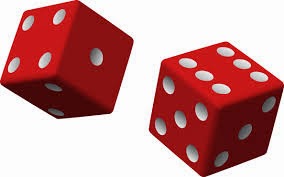Earlier this fall, South Dakota experienced an early blizzard that caught ranchers off-guard. Three to four feet of snow fell overnight in the first week of October when cattle were still in unprotected summer pastures and had not yet grown winter coats. Between 15,000 and 30,000 cows died during the storm, with some ranchers losing the majority of their herds.
This snowfall broke previous records for the entire month of October and came after several days of warm weather. It's being called a freak storm, but just how freaky is it? Since 2005's Hurricane Katrina broke all records as the most-damaging and costliest hurricane in US history, there has been a string of "freak" weather events that devastate communities. As seen in South Dakota, these communities are often food producers, which means that these storms also impact our food supply.
With a few exceptions, most people now recognize that human activities are changing the world climate in ways scientists are working to fully understand. Weather patterns are changing, overall temperatures of land and water are rising, and all of this has consequences.
It is difficult to grasp exactly what climate change means for future weather patterns -- increased drought and heat in some places might be paired with more frequent floods in others -- but the best explanation I've ever heard uses rolling dice as an analogy.
With a normal pair of dice (the weather patterns humans have lived with for millennia), the extremes in terms of rolls are a two or a twelve. So if you're rolling the dice for how intense the hurricane season will be, you could get a mild two or a terrible twelve. Climate change, scientists say, change the rules in two ways. First, it loads the dice so that the higher numbers are more likely. Category 5 hurricanes, massive tornadoes, or devastating droughts will become more common.
But the dice are changed in another way, too: Climate change adds dots. One of the dice gets an extra dot on each face. Now, the most mild weather we can hope for is a three, not a two, and at the other end, we can suddenly roll thirteens or fourteens.
We've seen some evidence of this in recent years. The northeast coast got slammed with two major hurricanes, Irene in 2011 and Sandy in 2013, that damaged states like Vermont that don't usually have to worry about hurricanes. Irene was the seventh-costliest hurricane in United States history and Sandy was the second-costliest. Twenty-six people were killed by a single tornado in Moore, OK, earlier this year.
The problem is not confined to the US by any means. In 2010, severe droughts killed as much as 25% of Russia's wheat crop, leading the country to ban wheat exports that year. Wheat prices spiked around the world.
Our food supply depends on predictable weather and we may not have that any more.
Two artists have been thinking about what foods might be lost altogether or become so scarce as to raise prices to luxury-good status. They are touring in what they call the Ghost Food truck, providing free tastes and smells of substitutes for chocolate milk, fried cod, and peanut butter. It's a bleak vision of the toll climate change could take on our food supply.

2 comments:
It still surprises me when I hear educated folks say they don't believe in global warming.
It is hard to ignore the evidence that continues to mount -- hopefully, we'll all manage to accept and do what needs to be done.
Post a Comment